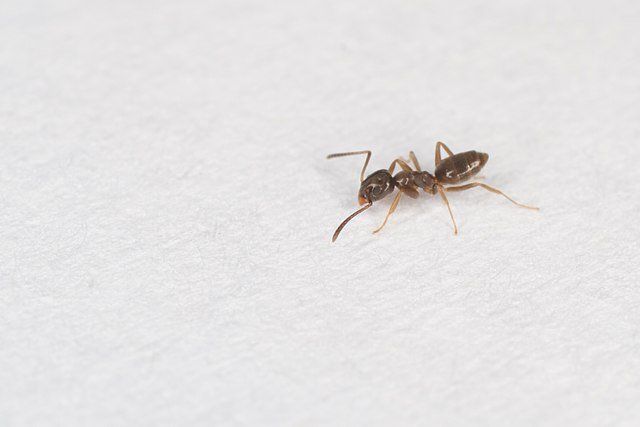-- Pest Library --
Odorous House Ant
Odorous House Ant Description
Also known as "sugar ants", these small ants are from 24.-3.3M long and are opportunists when it comes to nesting areas. They have a smooth, hairless body and are a brown or black color. They have an unevenly shaped thorax when viewed from the side.
Diet
Odorous house ants forage for food night and day. Outdoors they prefer honeydew from aphids and mealybugs. When the honeydew supply is reduced in autumn, they may move indoors for food. Indoors, they eat meats, sugary foods, dairy products, pastries, cooked or raw vegetables and fruit juices. When alarmed by a predator, worker odorous ants will move in quick, erratic motions, raising their abdomens into the air.
Life Cycle & Reproduction
Like all ants, odorous house ants live in colonies. Each colony may contain two or more queens and over 100,000 workers. The queens of an odorous ant colony can produce thousands of workers and hundreds of reproductives. New colonies are created in two possible ways. The first is when the colony produces winged male and female reproductives who swarm out of the nest, mate and the fertilized female establishes the new colony. Swarming typically occurs in the summer months. The second way odorous ants form new colonies is when a queen and workers bud off from the main colony and form their own new colony.
These ants develop by complete metamorphosis from egg, larva and pupa to adult. Development time from egg to adult is affected by several variables, such as temperature, but typically ranges from 34 to 83 days.
Habitat
Odorous house ants are opportunists, nesting both indoors and outdoors. Nests can be found in a great variety of situations. Indoors, odorous ants can nest in wall crevices, near heaters, water pipes, under carpets, beneath floors or sometimes behind paneling. They are most likely to invade buildings during rainy weather. Odorous ants travel in trails, foraging day and night. Outdoors, odorous house ants place their shallow nests beneath soil as well as in logs, mulch, debris and under rocks.










